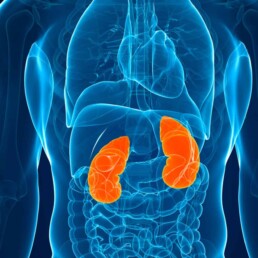Chronic kidney disease (CKD) and hypertension are two closely linked conditions that affect millions worldwide. Traditionally, they have been viewed as issues related to blood pressure regulation and kidney function. But emerging research is pointing to a deeper and more complex connection, one that links the brain, gut, microbiota, and kidneys. This interconnected system, known as the brain-gut-kidney axis, could open new doors for understanding, preventing, and treating CKD and hypertension.

The Microbiota Connection
Our gut is home to trillions of microbes that play crucial roles in digestion, immunity, and metabolism. When this microbial ecosystem is disrupted, a condition known as gut dysbiosis can trigger a chain reaction throughout the body. In CKD, gut dysbiosis has been linked to inflammation, metabolic changes, and immune dysfunction, all of which can worsen kidney health and elevate blood pressure.
What Is the Brain-Gut-Kidney Axis?
The brain-gut-kidney axis refers to a bi-directional communication network that connects the central nervous system, the gastrointestinal tract, and the kidneys. Here’s how the system works:
-
The brain regulates the autonomic nervous system and stress response, influencing gut motility and permeability.
-
The gut microbiota produces metabolites that can influence brain and kidney function, both directly and through immune and metabolic signaling.
-
The kidneys, in turn, affect gut health through uremia-induced changes in the intestinal barrier and microbial composition.
When any part of this axis becomes dysregulated due to factors such as poor diet, stress, medication, or disease, it can have ripple effects throughout the entire system.
Why This Matters in CKD and Hypertension
Both CKD and hypertension are associated with systemic inflammation, sympathetic nervous system overactivity, and metabolic disturbances. These are all areas where the brain-gut-kidney axis plays a central role. For example:
-
Immune dysregulation in CKD may be fueled by microbial products crossing a leaky gut barrier.
-
Sympathetic activation,a hallmark of hypertension, may be triggered or worsened by inflammatory signals from the gut.
-
Microbial metabolites such as short-chain fatty acids (SCFAs) or uremic toxins (e.g., indoxyl sulfate, p-cresol) can either protect or harm the kidneys, depending on the microbial balance.
-
Join us to end the kidney disease epidemic
A New Therapeutic Horizon
Understanding the brain-gut-kidney axis opens the door to novel treatments that go beyond blood pressure medications and dialysis. Future therapies may include:
-
Targeted probiotics and prebiotics to restore a healthy microbiome
-
Gut barrier protectants to reduce systemic inflammation
-
Neuromodulation techniques to reset autonomic balance
-
Dietary interventions designed to support microbial diversity and function
The Bottom Line on the Brain-Gut-Kidney Axis
The brain-gut-kidney axis represents a paradigm shift in how we think about hypertension and chronic kidney disease. Rather than treating these conditions in isolation, we must consider the body as an interconnected system, with the microbiota playing a central role. Ongoing research in this area is poised to revolutionize not just nephrology, but how we approach chronic disease as a whole. For a more in-depth review, read the original article here.






